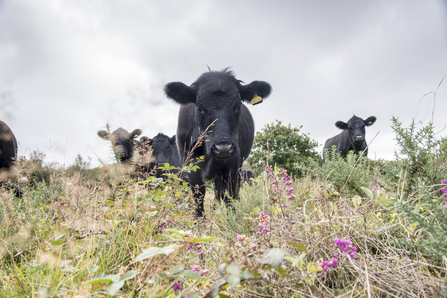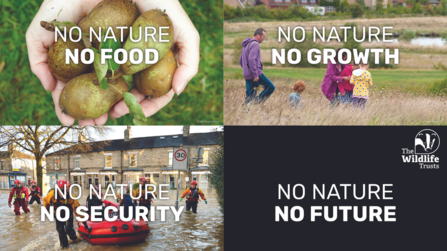The beauty of Cornwall’s wild places and wildlife can hide the fact that nature is seriously in decline. Evidence from Cornwall Wildlife Trust’s 2020 State of Nature in Cornwall report suggests that ‘Nature is in decline in Cornwall. Over the last 30 years, nearly half of terrestrial mammals and three-fifths of butterflies are found in fewer places... Whilst a few species have prospered, it is clear that an ecological emergency is unfolding.’
Yet at a time where more must be done to bring nature back, we continue to be concerned about recent announcements from the UK Government which threaten to leave wildlife unprotected and nature recovery critically underfunded. In partnership with other environmental and nature conversation organisations across the UK, Cornwall Wildlife Trust is speaking out to defend nature against these attacks, urging the Government to rethink current proposals.
Over these three blogs, my colleagues and I are exploring the key threats facing Cornwall’s already-vulnerable wildlife as a result of this attack on nature, and the disastrous effects they could have for already-vulnerable wildlife in Cornwall. In the first, I focussed on the Retained EU Law Bill; in this second post, I reflect on the Environmental Land Management schemes (ELMs) and ask you to join us in calling on the Prime Minister to not only maintain ELMs funding, but increase it from 2025.
What are the Environmental Land Management schemes (ELMs)?
ELMs were first announced in 2018 to support farmers to deliver for nature and climate, and to assure future food security. The schemes were designed to replace farm payments under the EU Common Agricultural Policy, which are being phased out between now and 2027. The aim was for farmers and other land managers to enter into agreements to be paid for delivering things we all benefit from: clean and plentiful water, clean air, thriving plants and wildlife, adaptation to climate change, and engagement with the environment.
The aim was to use public funds to pay for those basic environmental benefits, or ‘public goods’, which we all need for life, rather than paying a basic per hectare rate purely for the ownership of land, no matter how it was managed.
ELMs has three tiers:
- Sustainable Farming Initiative (SFI) – in essence payments to farmers for nature-friendly farming
- Local Nature Recovery (LNR) – paying farmers and landowners for habitat management and local scale habitat connectivity
- Landscape Recovery (LR) – larger-scale nature recovery including restoration
SFI pilot projects began in 2021 with partial roll-out of the SFI tier. In early September 2022, a suite of 22 LR pilots were also announced. LNR is intended to follow at a later date. Defra has been working towards a full launch of ELMSsin 2024.
What has caused the current concern?
Developing ELMs has taken a huge amount of time and public spending. However, this progress was thrown into doubt when the Truss administration announced a ‘rapid review’ of the scheme in late September. This was put into effect ‘to see where improvements could be made’, according to a Defra statement. Proposals on the future of farming funding are expected later this month, but what has not been made clear is exactly what kind of improvements are envisaged.
Along with other environmental groups, we are deeply concerned that watering down these schemes would severely impact nature’s recovery and the Government’s ability to meet crucial targets. Given the government’s broader stated desire to ‘reform bureaucratic processes in the planning system, create investment zones and unlock economic growth’, including through food production, there is a concern that the review of ELMs will roll back on the policy of public money for public goods, leaving the environment as an add-on to food production and short-term financial support. The review introduces uncertainty for farmers over what they can expect and what to invest in, at a time when certainty and stability is greatly needed.
New research suggests that the majority of the British public think that ‘the is Government is giving too little support to help farmers improve the environment and nature’. In addition, almost half (47%) of British people say that ‘improving natural resources (like soil, pollinators and water) is the most important factor for UK food security’. Around 8 in 10 adults would ‘support the Government rewarding farmers for measures to restore wildlife, lakes and rivers, and CO2-capturing wetlands and peatlands, which would only be available in a high ambition scheme’.



